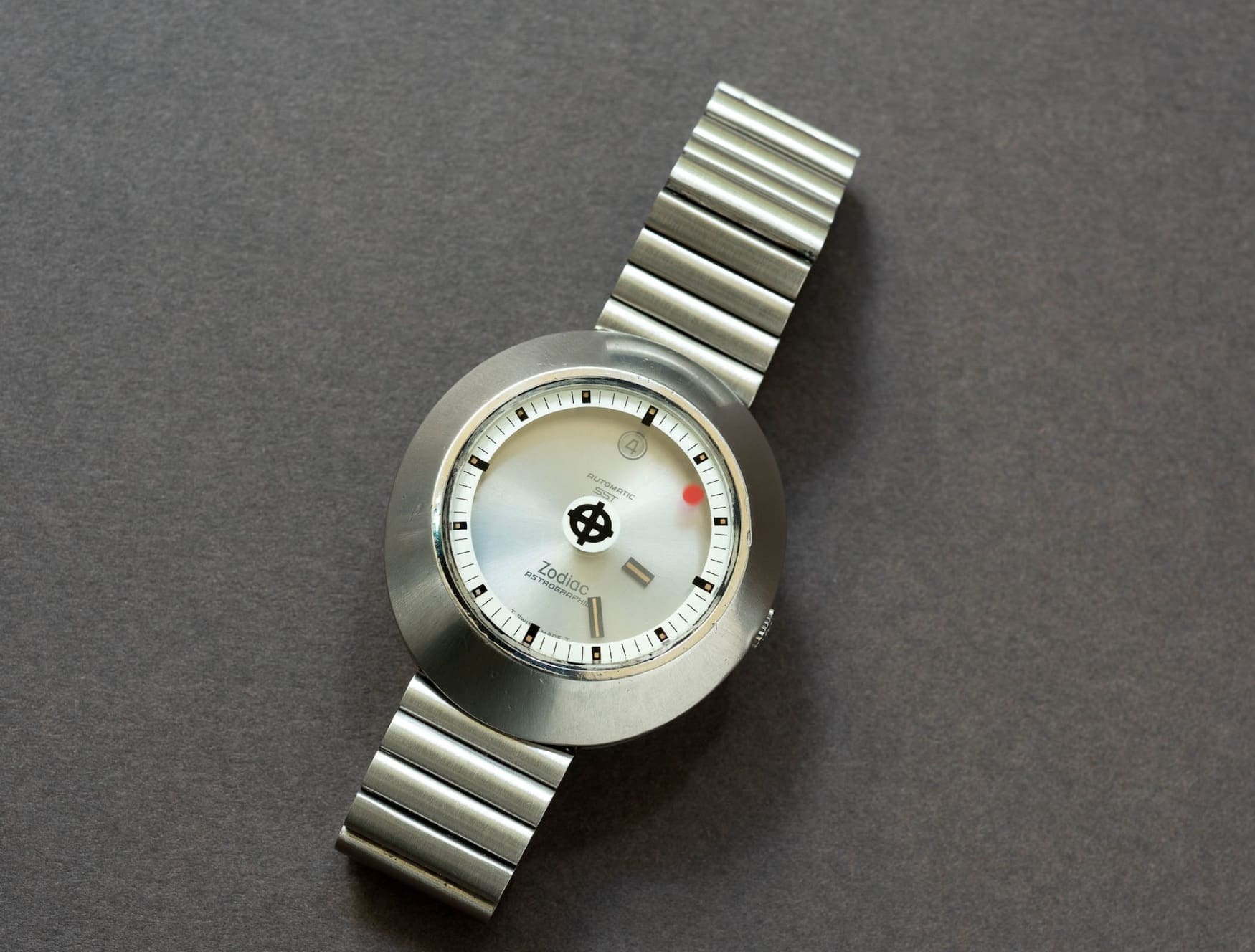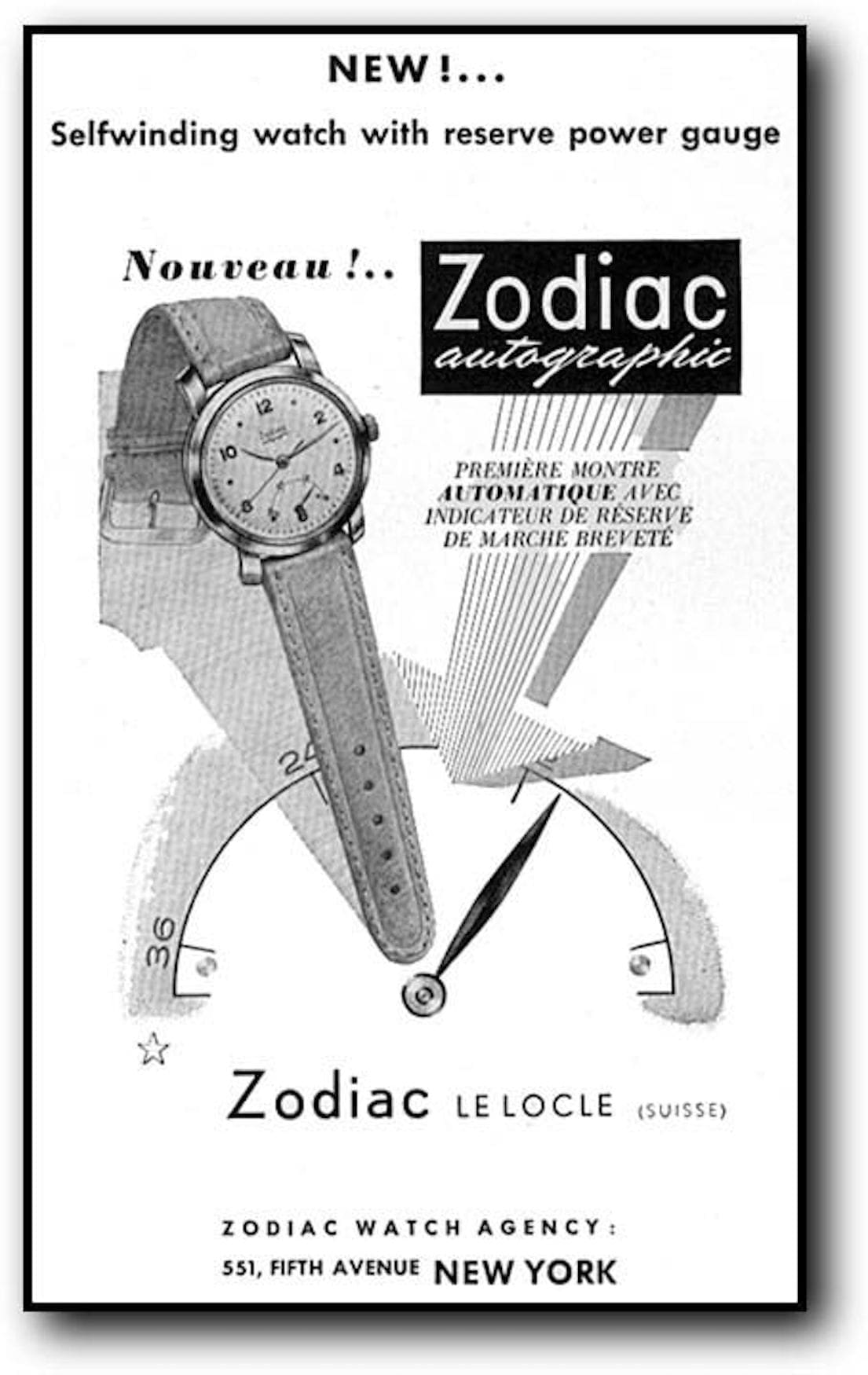Zodiac is a brand of firsts that you may not know about
Adam ReederZodiac is a modern watch brand, with a forward thinking philosophy. That’s why we’ve given them so much praise as of late. However, perhaps more importantly, Zodiac is a brand of firsts. Rolex collectors often attribute their love, or perhaps irrational worship, of the brand to its incredible heritage and record of trendsetting innovation. If that’s the standard, we can only assume that those same collectors have watch boxes overflowing with just as many Zodiacs. I jest, but if we’re to judge all watch brands by the same standards, Zodiac deserves to be mentioned alongside almost any other Swiss heritage brand, Rolex included.
Zodiac can trace its origins back to 1882. That’s when Ariste Calame, the son of a watchmaker, opened his workshop in Le Locle for pocket watch production. He operated the company under his own name until his son, Louis registered the brand name Zodiac in 1908. Louis had taken over his father’s watchmaking business in 1895 and wanted to establish it as a long-term brand. For the next few decades, the Zodiac grew and gained popularity for their durable and dependable pocket watches. By 1924, the culture of Zodiac had become one of innovation, and they began pushing their watchmaking acumen to the limits in earnest.
Triumphant tech

At the time, most pocket watches were relatively large and bulky. Some of that was by design, to make them easy to handle and legible. However, it was mostly due to the limits of watchmaking at that time. Making a movement flat enough to limit the girth of a pocket watch was a challenge. But Zodiac rose to that challenge and in in 1924 they released the Zodiac Triumph, which by all accounts was the first flat pocket watch ever. It utilized Zodiac’s robust and popular caliber 1617. The Triumph helped build Zodiac’s reputation as an innovator among their Swiss peers.
In the decade that followed, the wrist watch began to overtake the pocket watch in popularity. Like most other Swiss watchmakers, Zodiac shifted much of their efforts from designing and producing pocket watches to wrist watches. But that didn’t mean that all of the innovation and creativity that they put into their pocket watches simply faded away. They kept pushing forward.
Zodiac’s next leap came in 1930. They were one of the first brands to create watches with a patented shock protection system. They designed a movement using a z- shaped clip that was housed over the balance. This allowed for increased shock resistance and made Zodiac watches even more durable and apt for action than they had been previously.
Perhaps even more impressive, In 1937 the brand created a watch with a blazing 8 day power reserve. This was nearly unheard of at the time. It meant that a watch could sit idle for an entire week and wouldn’t need to be reset when picked up again.
Zodiac Autographic
In 1949, the Zodiac Autographic was launched at the Basel Fair in Switzerland. It was only the second wrist watch to ever include a power gauge.The Autographic is also considered by many to be the first ever automatic sports watch. Zodiac was blazing into the second half of the twentieth century and firing on all cylinders. One of the most frustrating things about mechanical watches was not knowing when they would run out of power. The Autographic solved that problem, and did so in style.
Rise of the Sea Wolf
1953 brought Zodiac what would perhaps be the most impactful first of all for the Le Locle-based brand. With the release of the Sea Wolf, Zodiac declared themselves first to the finish line in producing the world’s first dive watch released to the public. There is a lot of debate over this fact with both Rolex and Blancpain making similar claims. Nevertheless Zodiac seems to have just as much evidence as anyone else, so we’re giving them the W, at least in this article.
The Sea Wolf boasted a water resistance of 430 feet and had a rotating timing bezel. It was the perfect recipe for one of the most popular styles of watch for the next 75 years, at least! That’s why the Sea Wolf has also been such a popular reissue over the years. Zodiac continues to release new Sea Wolf models that never fail to excite
Floating into history

In 1969, Zodiac released the Astrographic which is one of the first ever watches with floating hands. The Astrographic was futuristic-looking when it was released in the late 1960s, and it remains so to this day. That’s why, just like the Sea Wolf, Zodiac continues to release new versions.
Just a year later, in 1970, the Zodiac Olympos was released. It was the first, and one of the only, watches to ever feature an angular, manta ray-shaped case. Just like the Sea Wolf and Astrographic, reissues of the stylish and fun Olympos continue to make Zodiac a fan favorite, especially in our little corner of the world.
One final note, just to add a little icing on the cake. In 1977, Zodiac released the world’s first LCD watch to obtain an official chronometer certificate. We didn’t even know that was a thing! Apparently it wasn’t, until Zodiac became the first to break that barrier too. So the next time one of your friends wants to wax poetic about the amazing heritage of their favorite watch brand, drop some knowledge of your own. You now know a brand that could pride themselves with being real innovators, and we have faith that Zodiac will continue to remind us all of that heritage with every new release.







